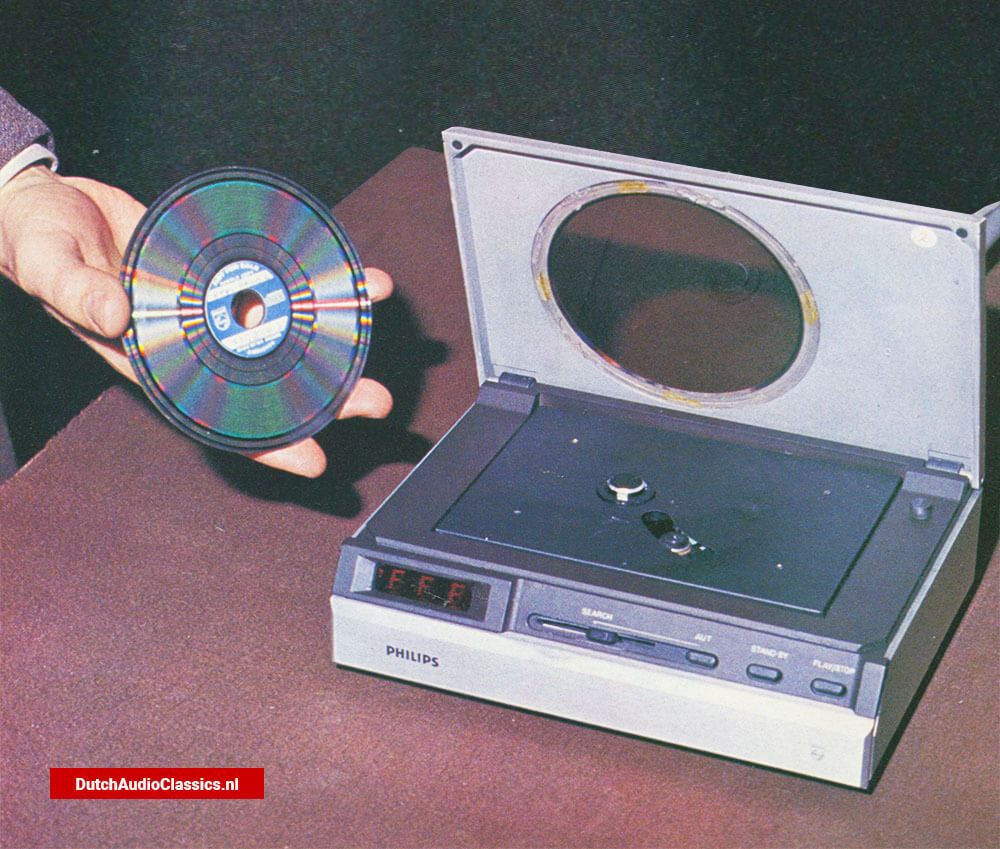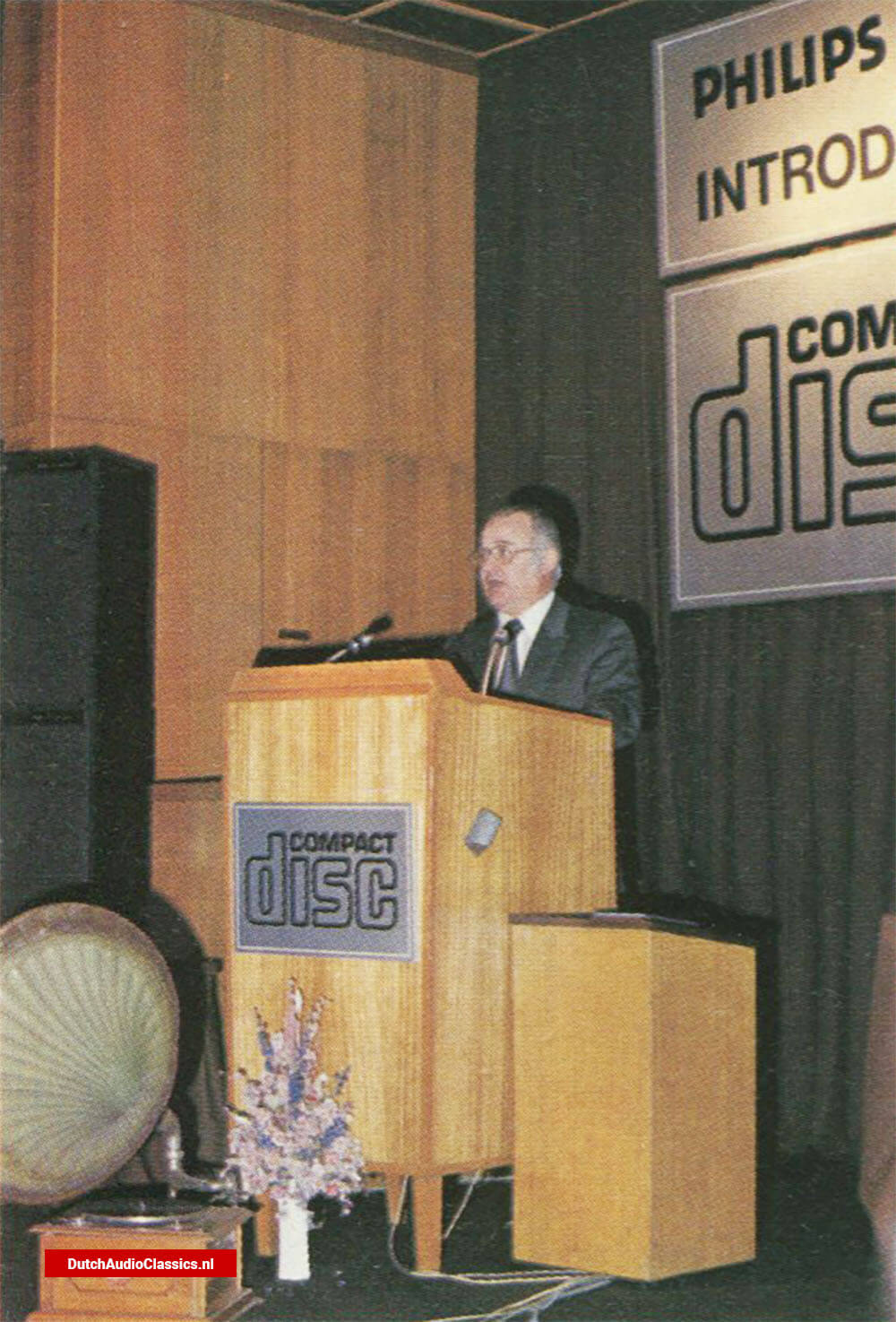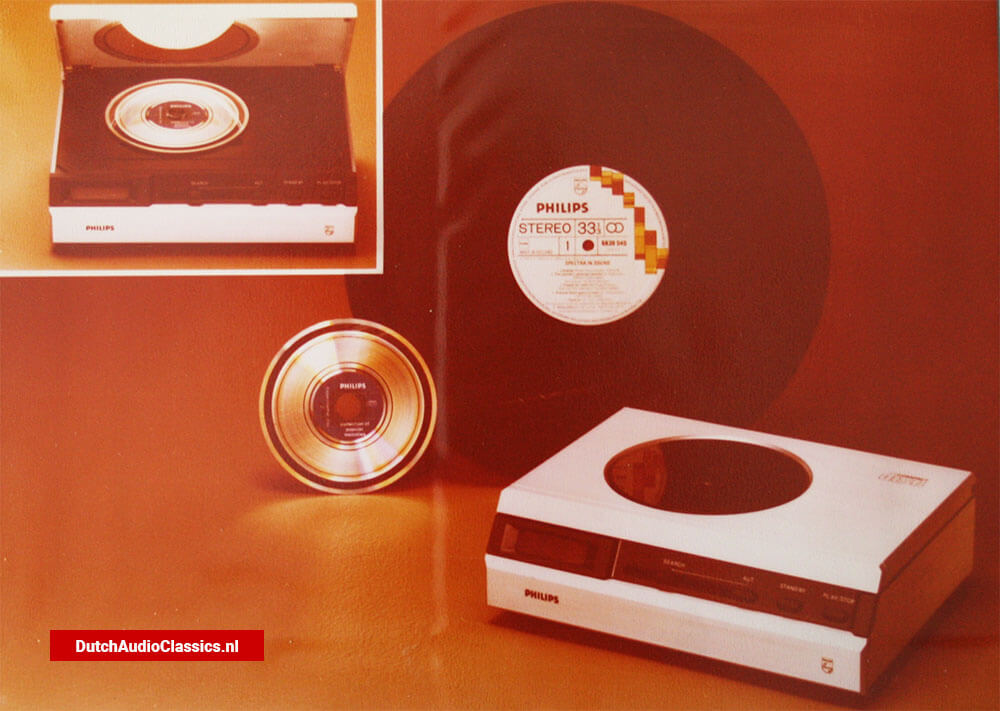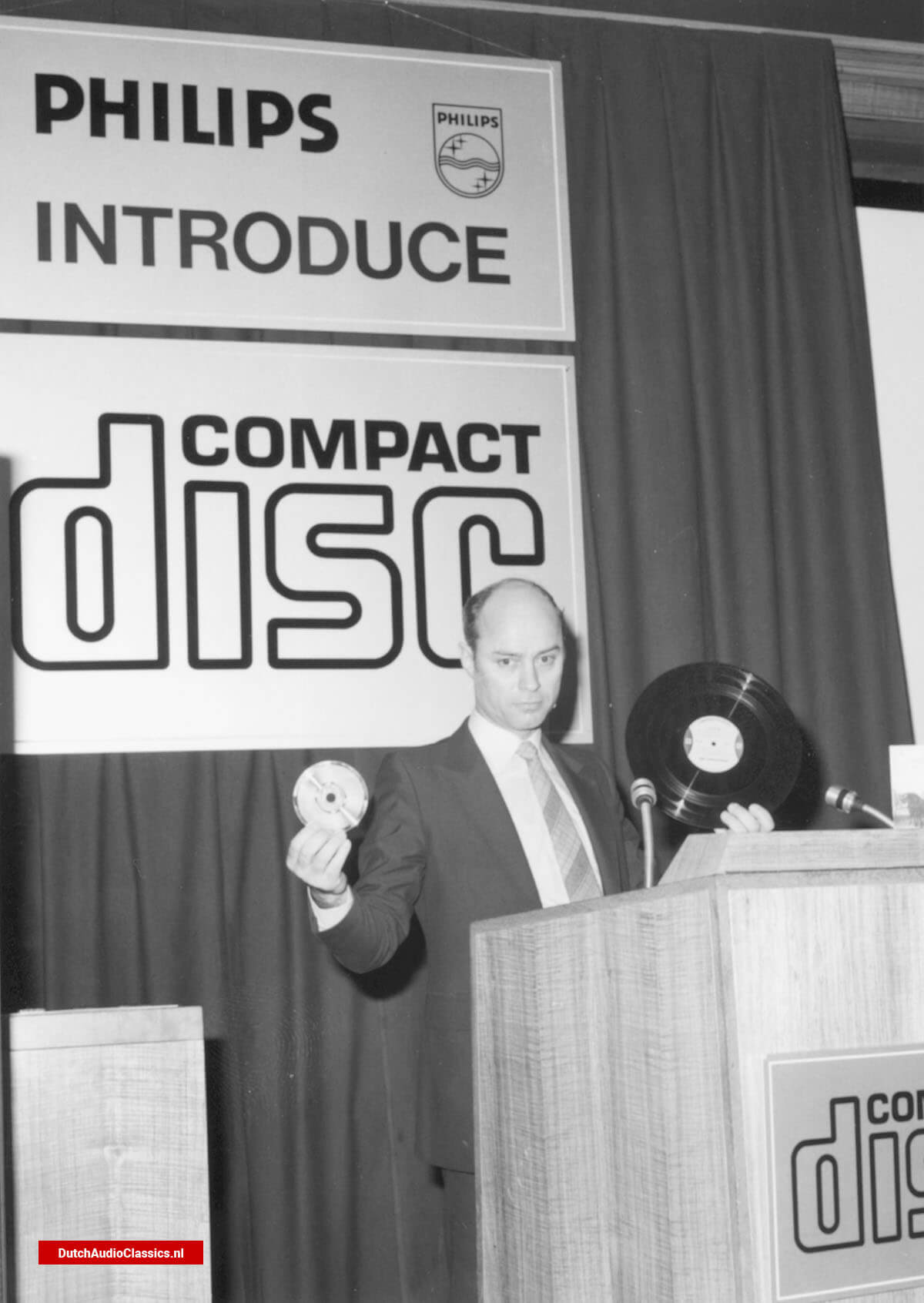It was so quiet in the wood-paneled room that you could hear a handkerchief fall. All of a sudden, brass blasted off with tremendous dynamism, violin bows whirred over the strings so that the collophonium became formally visible, one drummer worked furiously on the heads without one beat being lost in the other. The pauses and piano passages were not disturbed by any noise, crackling or crackling, only the air conditioning whirred softly.
Worldpremiere - Philips introduces the Compact Disc Eindhoven 8 March 1979
It was the world premiere of a new medium that Philips, the Dutch consumer electronics company, had invited to Eindhoven. Philips manager Joop von Tilburg, 44, greeted the press, which had come from Finland, France, Great Britain or Spain, promisingly: "We are offering a radical improvement in sound quality."
 A prototype Compact Disc player with a 11.5cm Compact Disc
A prototype Compact Disc player with a 11.5cm Compact Disc
What will change the playback so drastically is known as the popular abbreviation "digital turntable". Philips calls its new system "Compact Disc", abbreviated to CD, based on the "Compact Cassette". It has nothing in common with a traditional turntable except the fact that the new records will also be round - a shape that even the Philips engineers couldn't improve.
Otherwise everything is different. The plate itself measures 11.5 centimeters in diameter and is only 1.1 millimeters thick. While the conventional LP houses the musical information in a V-shaped groove, from which a diamond needle reads it out and converts the mechanical vibrations into electrical ones, the digital record is scanned optically and thus without contact or wear by a wafer-thin laser beam.
 Joop van Tilburg welcomes the international press to the world premiere of the Philips Compact Disc System on 8 march 1979
Joop van Tilburg welcomes the international press to the world premiere of the Philips Compact Disc System on 8 march 1979
It falls into tiny depressions that are embedded in the plate according to a certain pattern, the so-called pits. They are just 0.6 µm (micrometer) wide and 0.16 µm deep - this corresponds to the dimensions of a bacterium that can still be detected under the microscope.
Using the Pulse Code Modulation process, the digital information that the laser beam picks up (every pit in the plate means a 1 in computer language, every smooth surface a 0) is converted into electrical oscillations and fed to the loudspeaker via the amplifier - the result, as usual, is music.
But what for which: Thanks to the digital method, there are no more wow and flutter, no rumbling or other disturbing noises. Since the CD disk is sealed with a transparent layer, not even dust or even scratches or grease gets in the way. If it is totally dirty, it can simply be washed off.
 Philips Compact Disc player prototype, called Pinkeltje.
Philips Compact Disc player prototype, called Pinkeltje.
Joop P. Sinjou, 45, involved in CD development in Eindhoven, expressed the greatest advantage of the new system from a technical point of view: "The record enables a signal-to-noise ratio of 85 decibels compared to 60 decibels with a conventional record."
What this means only becomes clear to you when you listen: Jumps from pianissimo to fortissimo passages are mastered with unheard-of ease, even a large orchestra remains incredibly transparent and crystal clear.
When scanned on one side, the record allows a playing time of up to an hour. In principle, even four channels can be accommodated, which of course, according to a Philips spokesman, "is not considered for the time being". It will cost as much as a conventional long-playing record, i.e. between 15 and 25 marks.
 Joop Sinjou at the demonstration of the Compact Disc system, 8 March 1979
Joop Sinjou at the demonstration of the Compact Disc system, 8 March 1979
The player still has the format of a cassette recorder. Under its lid, the colorful, iridescent plate rotates at a variable speed; when the laser begins to scan the information track in the center, it is 500 revolutions per minute, outside only 215 revolutions. The frequency range of the system extends from 20 Hertz to 20 Kilohertz. The distortions are below 0.05 percent - simple dream values. The player should cost between 500 and 700 marks. The miniature laser used was allowed to have a service life of around ten years.
In Eindhoven, all Philips managers were cautious when asked about the date of the market launch. "The CD system was in the shops by the mid-1980s". it's diplomatic. Because although CD is technically mature, manufacturers have to commit themselves internationally to a common standard in order to keep records and players interchangeable; the press shops also have to adapt. According to Philips, the usual long-playing records and turntables will still be manufactured "in the next ten years". Nevertheless, the weather can be made: CD will be available until 1982: Then a respectable record collection can be accommodated in a couple of shoeboxes. The music will have a quality that audio philists can only dream of for the time being.